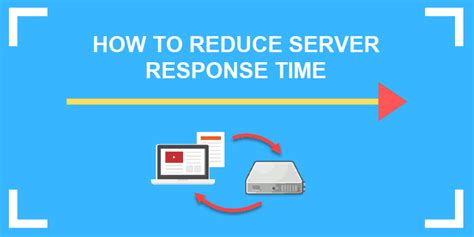In an increasingly digital world, having a fast and user-friendly website is essential for businesses and organizations. A well-optimized website not only loads quickly but also enhances user experience, leading to higher engagement and, ultimately, greater success.
One of the key factors in achieving a high-performing website is optimizing its loading speed. When a website loads slowly, it not only frustrates users but also affects search engine rankings. This can result in a significant loss of potential customers and revenue. Therefore, it is crucial to implement strategies that improve website loading speed and ensure a seamless browsing experience.
Efficient website optimization involves various techniques and considerations. For instance, optimizing image sizes and formats can significantly reduce load times without compromising on visual quality. Additionally, caching and compression can be employed to decrease file sizes and enable faster delivery of content to users. These optimizations, combined with strategic content delivery and server optimization, can greatly enhance page loading speed, resulting in a smoother user experience.
Enhance Loading Performance Through Effective Image Optimization

In today's digital age, images play a vital role in attracting and engaging online visitors. However, large image sizes can significantly impact website loading speed, leading to a poor user experience. To ensure optimal website performance, it is crucial to optimize image sizes and formats effectively.
One of the key strategies to improve website loading speed is to optimize image size without compromising quality. By reducing the file size of images, webpages can load faster, resulting in a seamless user experience. Additionally, utilizing the correct image format can further enhance loading performance.
When optimizing image size, it is essential to strike a balance between image quality and file size. High-resolution images may provide superior visual quality, but they often come with larger file sizes that take longer to load. By resizing images to the appropriate dimensions for website display, unnecessary data can be eliminated, redu
Optimize Your Web Page Performance
In order to enhance the efficiency and effectiveness of your website, it is essential to optimize various aspects of your web page, such as HTML, CSS, and JavaScript files. This article delves into the importance of minifying these files and provides useful tips to do so.
Minification refers to the process of removing unnecessary characters, including white spaces, line breaks, and comments, from your HTML, CSS, and JavaScript files. By reducing the file size through minification, you can significantly improve your website's loading speed, enhancing the overall user experience.
Minifying HTML, CSS, and JavaScript files not only reduces their file sizes but also improves browser parsing and rendering. When your website loads quickly, visitors are more likely to stay and browse through your content, leading to higher engagement and conversion rates.
There are various tools available to minify your code automatically, or you can manually remove unnecessary characters. Furthermore, it is crucial to ensure that minification does not compromise the functionality or readability of your code, so thorough testing is necessary after the process.
In conclusion, minifying your HTML, CSS, and JavaScript files plays a vital role in optimizing your website's performance. By removing unnecessary characters and reducing file size, you can significantly improve your website's loading speed and user experience. Invest time and effort into minification and witness the positive impact it can have on your website's overall efficiency and success.
Boost Performance with Effective Caching Techniques

In the fast-paced digital world, it is crucial to optimize your website's performance both in terms of speed and user experience. One effective method to achieve this is by enabling caching, a technique that can significantly enhance the loading speed and overall performance of your website.
Caching can be defined as the process of storing data temporarily in a cache memory, allowing for quick access and retrieval without the need for repeated processing. By enabling caching on your website, you can reduce the load on your server and minimize the time it takes to render a web page.
When caching is enabled, key resources of your website, such as images, scripts, and stylesheets, are stored in the user's browser or a proxy server. This means that when a user visits your website again, these resources can be retrieved from the cache instead of being fetched from the server, resulting in faster loading times and improved user experience.
One commonly used caching technique is browser caching, where you set the expiration time for specific resources in the HTTP headers. This ensures that the user's browser will store these resources locally and only request them again if they have expired or been modified. By leveraging browser caching effectively, you can significantly reduce the number of HTTP requests, resulting in faster page loading times.
Another caching technique that can enhance website performance is server-side caching. This involves caching the responses generated by your server and serving them directly to subsequent requests. By implementing server-side caching effectively, you can minimize the need for resource-intensive server-side processing, leading to faster response times and improved overall performance.
In conclusion, enabling caching is an essential strategy for optimizing website performance. By leveraging browser caching and server-side caching techniques, you can significantly improve loading speed, reduce server load, and ultimately enhance the user experience. Take advantage of these caching techniques to create a fast and efficient website that keeps your visitors engaged and satisfied.
Optimize Website Performance with a Content Delivery Network (CDN)
Maximizing the speed and performance of your website is crucial in providing users with a seamless browsing experience. One effective strategy to achieve this is by utilizing a Content Delivery Network (CDN). By distributing your website's content across multiple servers located in various geographic locations, a CDN helps improve loading speed and ensure optimal user experience.
A CDN works by caching static files, such as images, JavaScript, and CSS, on servers strategically placed near the users' geographical location. This reduces the distance content has to travel, minimizing latency and enhancing loading speed. As a result, users can access your website quickly, regardless of their location.
| Improved Page Load Times | Enhanced Global Accessibility | Reduced Server Load |
|---|---|---|
| A CDN significantly reduces the time it takes for your webpages to load, ensuring a smooth user experience. | By storing your content on servers located worldwide, a CDN enables faster loading times for users across the globe. | Offloading static content to a CDN reduces the load on your website's server, improving overall performance and scalability. |
Furthermore, a CDN offers additional benefits such as enhanced security, improved SEO rankings, and bandwidth cost savings. It helps protect your website from various cyber threats, safeguards user data, and minimizes the risk of downtime.
In conclusion, employing a Content Delivery Network is a powerful technique to optimize website performance, enhance user experience, and achieve global accessibility. By leveraging a CDN, you can deliver your content quickly, minimize latency, and ensure that your website is accessible to users worldwide.
Reducing Server Response Time

Enhancing the speed and performance of your website involves numerous optimization techniques. One crucial aspect to focus on is reducing server response time. By minimizing the time it takes for your server to respond to user requests, you can significantly improve the overall user experience.
Streamlining server response time involves various tactics, including optimizing database queries, utilizing content delivery networks (CDNs), and implementing caching mechanisms. Employing these strategies ensures that your website's server responds promptly, leading to faster loading times and improved user satisfaction.
1. Database Optimization: Efficiently organizing and indexing your website's database can drastically reduce server response time. Analyze your database structure, eliminate redundant data, and optimize queries to optimize performance. |
2. Leveraging Content Delivery Networks (CDNs): Utilizing CDNs helps distribute your website's content across various servers worldwide. This ensures that users can access your website's resources from a server that is geographically closer to them, resulting in reduced server response time. |
3. Implementing Caching Mechanisms: Implementing caching mechanisms like browser caching and server-side caching can significantly improve server response time. Caching stores frequently accessed data or resources, reducing the need for the server to generate a response for every user request. |
By implementing these strategies and optimizing your website's server response time, you can create a faster and more responsive user experience. Users will enjoy quicker load times, improved interactivity, and a more seamless browsing experience overall.
Optimizing Image Loading with Lazy Loading Technique
In today's digital landscape, the performance and user experience of a website play a crucial role in its success. One way to enhance these aspects is by implementing the lazy loading technique for images. This technique allows for faster loading speeds and improved user experience by loading images only when they are needed, rather than all at once.
Lazy loading is a strategic approach that prioritizes the efficient use of network resources and reduces the loading time by displaying the content that is immediately visible to the user. Instead of loading all the images on a webpage initially, the technique loads only the images that are in the viewport or about to come into view as the user scrolls down the page. This ensures that the user sees the content right away, without having to wait for all the images to load.
There are various ways to implement lazy loading for images on your website. One popular method is to use JavaScript libraries or plugins specifically designed for this purpose, such as "LazyLoad" or "Intersection Observer". These tools allow you to easily add lazy loading functionality to your website by simply including a few lines of code.
- Lazy loading works seamlessly across different devices and screen sizes, making it a versatile solution for improving website performance.
- By employing lazy loading, you can significantly reduce the initial load time of your web pages, which is especially beneficial for users with slow internet connections or limited data plans.
- This technique can also help optimize the loading speed for mobile users, as it reduces the amount of data that needs to be transferred over the network.
- Furthermore, lazy loading can have a positive impact on your website's search engine optimization (SEO). Since search engines prioritize fast-loading websites, implementing lazy loading can potentially improve your site's ranking in search results.
- It is important to note that while lazy loading can enhance user experience and performance, it should be implemented thoughtfully. It is crucial to find the right balance between loading only the necessary images and ensuring a seamless user experience.
Overall, implementing lazy loading for images is a valuable technique for optimizing your website's loading speed and enhancing the user experience. By selectively loading images based on user interactions, you can reduce load times, improve performance, and create a more engaging browsing experience for your visitors.
Enhance Mobile Responsiveness

Optimizing the adaptability of your website across different mobile devices is crucial for enhancing the user experience. Mobile responsiveness ensures that your site loads quickly and is visually appealing on smartphones and tablets, improving overall user satisfaction and engagement.
Here are some effective strategies to enhance the mobile responsiveness of your website:
- Implement a responsive design: Creating a responsive design allows your website layout to automatically adjust according to the screen size and orientation of the device. This ensures that your website is easily accessible and readable on any mobile device.
- Utilize media queries: Media queries enable you to set different CSS styles or layouts based on specific screen size breakpoints. By optimizing your website's design for different resolutions, you can provide a seamless experience for mobile users.
- Optimize images: Compressing and resizing images can significantly reduce loading times. Ensure that your website uses appropriately sized and compressed images to maintain fast loading speeds on mobile devices.
- Minify CSS and JavaScript: Minifying your CSS and JavaScript files removes unnecessary characters and reduces their file size. This optimization technique can enhance the loading speed of your website on mobile devices.
- Prioritize content and minimize distractions: Mobile users often have limited screen space. Prioritize important content and minimize unnecessary elements to improve readability and provide a focused browsing experience on mobile devices.
- Implement lazy loading: Lazy loading allows your website to load images and other media only when they become visible on the screen. This technique conserves bandwidth and accelerates the overall loading speed, especially on mobile connections.
- Optimize font sizes: Ensure that your website uses appropriate font sizes that are legible on smaller screens. Test your website on various mobile devices to avoid readability issues and provide a comfortable reading experience.
- Test and analyze: Regularly test and analyze your website's mobile responsiveness using tools like Google's Mobile-Friendly Test. This will help identify any areas that need improvement and ensure optimal performance across different devices.
By focusing on enhancing your website's mobile responsiveness, you can create an enjoyable user experience that caters to the growing number of mobile users. Implement these strategies to improve loading speeds, increase engagement, and ultimately drive better results for your website.
FAQ
What are some tips for improving website loading speed?
There are several tips to improve website loading speed. First, optimize and compress images to reduce their file size. Second, minify CSS and JavaScript files to remove unnecessary characters and reduce file size. Third, enable browser caching to store cached versions of static resources. Fourth, use a content delivery network (CDN) to distribute your website's files across multiple servers. Fifth, reduce the number of HTTP requests by combining multiple files. Finally, consider using a faster web hosting provider.
How does optimizing images help improve website loading speed?
Optimizing images involves reducing their file size without significantly affecting their quality. By compressing images, you can decrease the amount of data that needs to be loaded when a webpage is accessed, resulting in faster loading times. Optimized images also consume less bandwidth, making them load more quickly on slower connections. Additionally, properly sized and optimized images can prevent layout shifts and improve the overall user experience.
What is minification and why is it important for website loading speed?
Minification is the process of removing unnecessary characters, such as whitespaces, comments, and line breaks, from CSS and JavaScript files. By minifying these files, their size is reduced, allowing them to be transferred from the server to the user's browser more quickly. Smaller file sizes mean faster loading times, as the browser has less code to parse and execute. Minification is an important technique for improving website loading speed and overall user experience.
How does browser caching affect website loading speed?
Browser caching involves storing static resources, such as images, CSS files, and JavaScript files, on the user's computer or device. When a webpage is accessed, the browser can retrieve these cached files instead of downloading them from the server again. This reduces the number of requests sent to the server and speeds up the loading process. By setting appropriate caching headers and utilizing cache-control directives, website owners can control how long resources are cached, ensuring a faster and more efficient user experience.
Why is using a content delivery network (CDN) beneficial for website loading speed?
A content delivery network (CDN) is a network of servers located in various geographic locations. When a user requests a webpage, the CDN delivers the website's files from the server that is closest to the user's location. This reduces the distance the data needs to travel, resulting in faster loading times. Additionally, CDNs can handle high traffic loads and distribute the load across multiple servers, enhancing performance and improving user experience. Utilizing a CDN can greatly improve website loading speed and overall performance.
Why is website loading speed important?
Website loading speed is important because it directly impacts user experience. A slow-loading website can lead to frustration and potentially drive users away. Additionally, search engines take loading speed into consideration when ranking websites, so a slow site may also affect its search engine visibility.
What are some common factors that can slow down website loading speed?
There are several factors that can contribute to slow website loading speed. Some common ones include large image or video files, excessive use of JavaScript or CSS files, inefficient server configurations, lack of caching, and external scripts or plugins that require additional resources to load.



